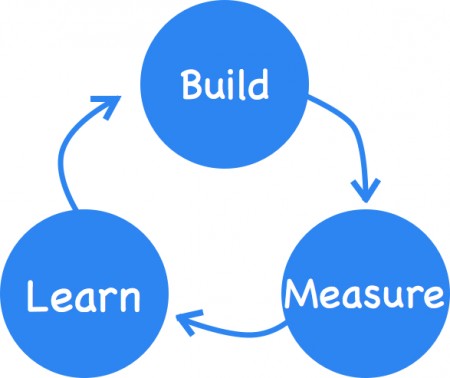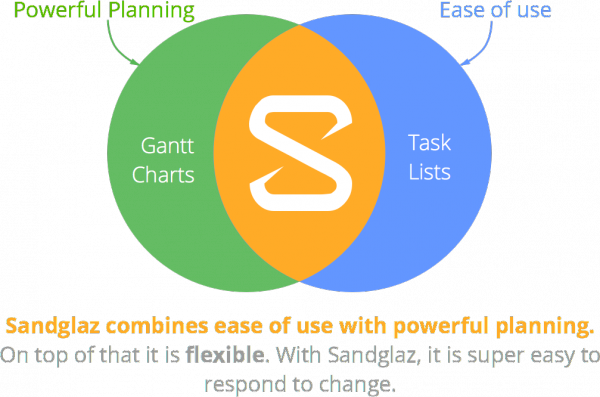Why businesses that embrace change win
“Embracing Change” has been getting a lot of buzz in the last few years. Words like ‘lean’, ‘agile’, ‘iterative’, and ‘flexible’ have become commonplace. Startups and big companies alike are striving to follow this trend. But, why? What does it all mean? And, what’s the value in it? These are some important questions to answer before you hop on a new trend. So for those interested, I gathered some background information about it. Spoiler alert! The trend in fact didn’t come from one place only, it has multiple origins.
The origins of embracing change
The agile manifesto was among the first to popularize the value of embracing change. A manifesto focused on software development, born on February, 2001 and states “we value responding to change over following the plan”. It explains that we should welcome changing requirements, even late in development. The manifesto further states “we value customer collaboration over contract negotiations”. Agile processes harness change for the customer’s competitive advantage. It advocates building a project in increments that are delivered to the customer for feedback, and the path of the project and it’s requirements are continuously adjusted based on that feedback. This ensures that the project is built to the best way it could be rather than to the initial plan.
Embracing change was also an integral part of Steve Blanks’s Customer Development model created in the mid 90s, and later built on by Eric Ries in the Lean Startup movement. The concept details a scientific approach to improve the likelihood of product success through iterative releases, measuring progress and gaining valuable customer feedback. Their methodology again recommends working in small iterations and collecting feedback to enable changing directions throughout the lifetime of the project.
Steve Blank goes even further in his book "The Four Steps to Epiphany" to assert that successful startups have all followed the Customer Development model outlined in his book whether knowingly or not. He implies that any successful company must have started by listening to it’s customers and iterating to meet their needs; embracing change rather than following an initial vision. Initial vision is rarely a good idea from the get-go! It always requires moulding.
It is not the strongest or the most intelligent who will survive but those who can best manage change.
~ Charles Darwin
How it works
Embracing change ensures that your team is open to opportunities that may arise. They are building the product to meet the target market’s needs rather than building it to spec. The process can be broken down into 3 steps: build, measure the results (which can be qualitative or quantitative, through analytics or customer feedback), and learn from that feedback. Hence, adjust your plans as you go forward.
While ‘embracing change’ was born in the software world and the startup world, it has since moved to many more industries. Any field that allows for change mid-way can and should leverage that advantage. Design and marketing are two other examples, where after-the-fact changes are not only affordable but also encouraged. The ability to iterate, measure, learn and adjust allows you to steer your efforts into the right direction, rather than drive fast over a cliff! It’s what allows you to stay ahead of the curve and be able to compete.
This trend is not only changing our attitude towards change, but is also impacting the way we plan our work. It is reducing how much effort we put into upfront planning in favor of creating “rough” plans and expect them to change.
Customer facing vs in-house feedback iterations
When you release a version to a customer -- whether you’re releasing it to a single customer you’re collaborating with or you’re releasing it (beta or not) to many customers -- you are projecting an image on your work. Your reputation is being built. So do not publicly release a sub-par version! Do not release it if it’s not eye candy. Do not release it if it’s buggy. But, do release it if has a minimum feature set.
The 80/20 rule states that the first stretch of a project moves faster than the last stretch. As such you might be tempted to get feedback early on, before you spend time perfecting your project. If you’re in this position and you’re not at a good point to show your work to customers, look for feedback in-house. Leverage the 30% feedback rule.
Know your customer
If you are doing consulting work for one single customer, then you’re there. You know who your customer is. But, if you’re building a product or service for the masses then it gets trickier. The best ideas are not built by consensus, but they are built to solve a problem shared by many people. If you ask for feedback from everyone who tries your product, they will pull you in many different directions. So, you need to narrow down whose problem are you solving. It can’t be everyone’s. Moreover, you need to listen to the customer’s problem, not the solution they are proposing. Customers often explain their problems via suggesting solutions. It takes some skill to listen to the problem they are trying to solve instead.
Choose the right software tools
If you want to build the culture of embracing change, you want to use the software tools that support it.
The problem with Gantt Charts
Gantt charts require a considerable amount of upfront planning. It requires you to fill in all the details about the tasks involved, how long they will take, who will do them, as well as all the dependencies. You need to put all this planning effort at the beginning of the project when you know the least about it, so your plans are likely to be way off. And each time you need to update your plans, you need to spend considerable time and effort updating all those details. This will make you resist change. It will make change feel like a failure.
Gantt charts are not designed to embrace change. On the contrary, they’re designed with the mindset that change is a failure to follow your plan. Afterall, gantt charts originated in the construction industry, where after-the-fact changes are extremely costly, or impossible. This renders them unsuitable for the newer industries where the ability to embrace change is key to success.
The problem with shared task lists
Shared task lists do not inherently support planning your tasks in iterations. Tasks are lumped up in a long list with no way of viewing a timeline of when tasks are expected to be worked on. Hence, there is no efficient method of communicating priorities. This discourages change as extra effort is required to communicate plan and priority changes to the rest of the team. There is a need for constant triaging, meetings and communication from managers on what the current priority is.
Working on the right priorities is also important for the build-measure-learn-cycle. Building the first block that can be learnt from allows you to collect data, learn and adjust your plans accordingly. This helps you steer your product or service in the right direction. Difficulty in organizing what tasks to work on first will also make it harder to skillfully choose those tasks that will result in the most learning early on.
Some shared task list products offer adding task due dates to tasks, however this doesn’t fix the planning problem. Instead this increases upfront planning effort, as creating a plan would requires you to add a specific exact date to each task. In addition, that would make your plans too exact and discourage change.
The Sandglaz way
Sandglaz is an easy-to-use project management tool built with an innate ability to embrace change and improve collaboration within your team.
Sandglaz requires no or minimal upfront planning. Creating and editing tasks is as simple as it gets, yet you end up with a plan that is flexible and easy to change. This elegant design bridges the gap between simple task lists and the rigid gantt charts offering a way to plan quickly and evolve your plans as you go.
With Sandglaz, you plan visually and in rough milestones (e.g. weeks, months, etc.) reducing planning overhead. You are not required to input exact time/dates or assign every task to a person. Instead, you jot down your tasks quickly in their corresponding milestones. This dramatically reduces the time it takes to plan your tasks, which makes you less resistant and more open to changing them as needed.
Assuming that your plans are not set in stone, Sandglaz offers multiple way to keep evolving and adjusting your plans. In addition to the easy visual drag and drop of tasks between milestones, Sandglaz automatically moves your uncompleted tasks forward for you. Another way to update your plans is by postponing and advancing milestones. There is endless flexibility in the way you can work. All just a few clicks away.
Sandglaz is the only tool I could find that allowed doing both: set long term objectives/goals, and also dynamically adjust what you're working on each individual day. Plus, I no longer have to worry about dealing with a backlog of uncompleted tasks — they're automatically moved to the next day if I don't complete them!
~ Mike Rossi, CEO & Co-Founder of Sweet Tooth
The design of Sandglaz encourages you to embrace change. Hence, instead of thinking of it as a failure to follow the plan, you’ll start thinking of it as a natural way of working. Sandglaz is packed with all the necessary task management capabilities, but instead of ‘pitching’ it for you here, you can go ahead and try it for yourself.
Concluding thoughts
In the modern workplace, after-the-fact changes are often desirable. It allows us to be flexible and build solutions that are great, rather than solutions that are to initial plan. Embracing change is a key new business trend that is popular for good reasons. However, like everything else in business (and life!), blindly following a trend does not work. Be sure to know what you’re doing, how you’re doing it and why. Be sure to reap the benefits of embracing change.
Does your team value embracing change? Do you have tips on how to do it well? Please share with us in the comments below.


